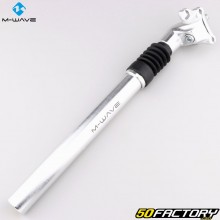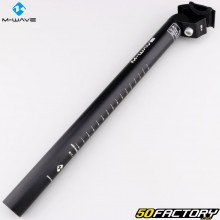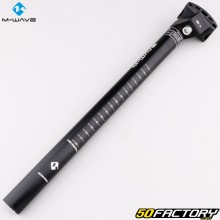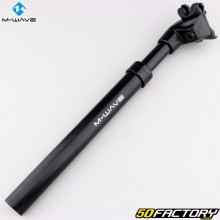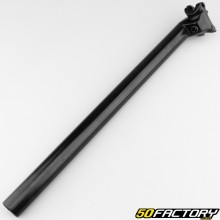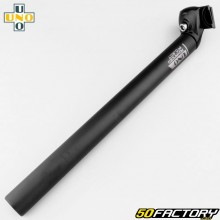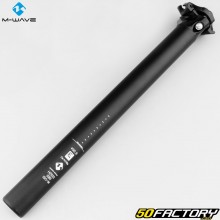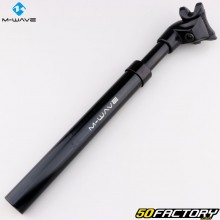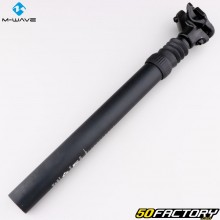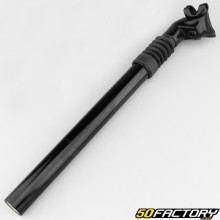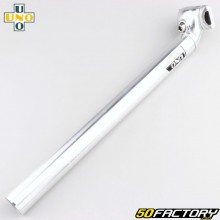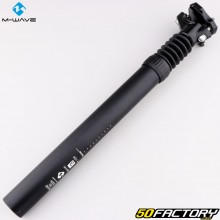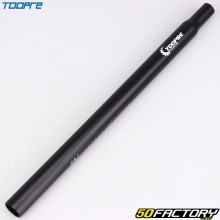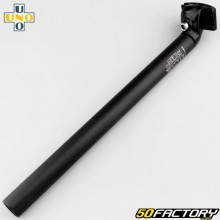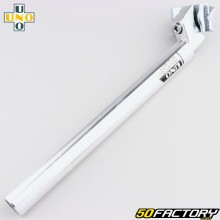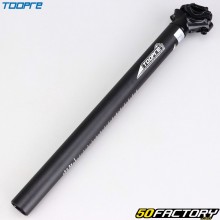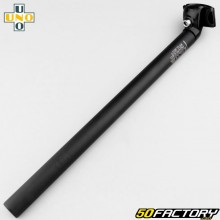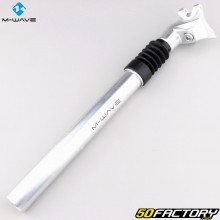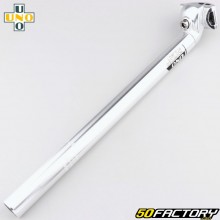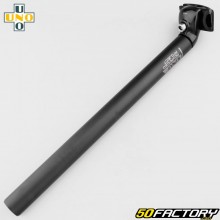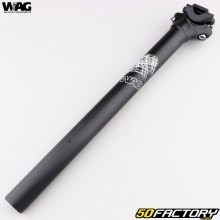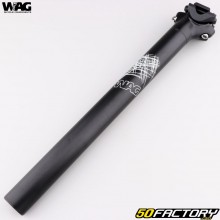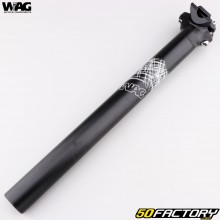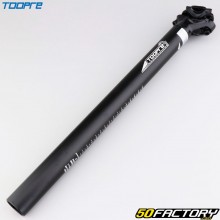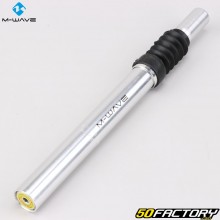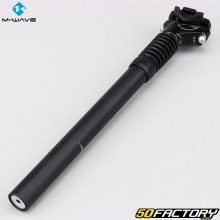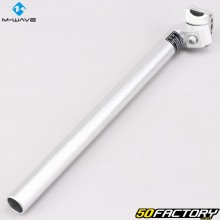 Standard seat post
Standard seat post
-
- IN STOCK10€00
- IN STOCK10€00
-
- IN STOCK15€70
- IN STOCK13€80
- IN STOCK20€90
- IN STOCK14€30
- STOCK EXHAUSTED14€70
-
- IN STOCK14€50
- IN STOCK14€90
- IN STOCK20€30
- IN STOCK20€30
-
-
- IN STOCK19€20
- IN STOCK12€90
-
- IN STOCK19€90
- IN STOCK21€40
- IN STOCK14€30
-
- IN STOCK16€30
- IN STOCK19€10
- IN STOCK18€70
- IN STOCK16€90
- IN STOCK17€80
- IN STOCK24€80
- IN STOCK19€30
- IN STOCK31€40
- IN STOCK31€40
- IN STOCK30€20
- IN STOCK15€70
- IN STOCK17€50
-
-
-
- IN STOCK10€00
- IN STOCK10€00
- IN STOCK10€00
- IN STOCK25€70
Everything you need to know about the standard seat post for VTC trekking
What is a standard seat post?
The seat post is the part of the bike that connects the saddle to the frame. Essential for adjusting the height of the saddle, it allows the cyclist's position to be adapted according to their morphology and riding style. A standard seat post is specifically designed for mountain bikes (VTC) used for trekking, offering a combination of robustness and comfort.
Role and importance
The seat post plays a vital role in keeping the saddle in place and absorbing shock. It contributes to the rider's stability, reduces muscle fatigue and improves pedaling efficiency. A quality seat post ensures an ergonomic riding position, which is essential for preventing pain and injury on long rides.
The different materials
In aluminum
Aluminum seatposts are popular because they are lightweight and strong. They offer a good compromise between weight and durability, and are generally less expensive than carbon. Aluminum is corrosion resistant, making it an ideal choice for the varied conditions encountered when trekking.
In carbon
Carbon seatposts are known for their light weight and ability to absorb vibrations, providing superior comfort. Although more expensive, they are ideal for cyclists looking for performance and comfort over long distances. Since carbon is a composite material, it allows for seatposts to be designed with optimized shapes for better ergonomics.
In steel
Steel seatposts are extremely strong and durable. They are ideal for riders who value strength and durability. Although heavier than aluminum or carbon, they offer excellent shock absorption, which can be an advantage on rough terrain.
Selection criteria
The type of bike
The choice of the standard seatpost for your trekking VTC depends mainly on the type of bike. For a trekking VTC, it is important to choose a seatpost that offers a good balance between robustness and comfort. Aluminum or carbon models are often preferred for their lightness and their ability to absorb vibrations.
The cyclist's morphology
The cyclist's morphology is an essential criterion in choosing the seat post. The length and diameter of the post must be adapted to the height and weight of the cyclist. A height-adjustable seat post is essential to adjust the position of the saddle and avoid back or muscle pain.
The materials
As mentioned earlier, seatpost materials play a crucial role. Aluminum offers a good compromise between weight and cost, carbon excels in terms of lightness and comfort, while steel is synonymous with strength and durability. The choice of material will depend on your priorities in terms of performance, comfort and budget.
The criteria of resistance, adaptability, comfort and weight
The strength of the seat post is essential to ensure its durability and ability to withstand the stresses of trekking outings. Adaptability refers to the ability to adjust the height and angle of the saddle. Comfort is determined byar the seatpost's ability to absorb shock and vibration. Finally, weight is an important factor in the bike's overall performance. Riders must find the right balance between these criteria to choose the seatpost that best meets their needs.
Installation and adjustment
Installation steps
Installing a standard seatpost on a trekking VTC is relatively simple, but requires a few precautions to ensure a secure attachment. Here are the steps to follow:
- Loosen the seat post clamp on the bike frame.
- Insert the seat post into the frame's seat tube, making sure to respect the minimum and maximum height markings indicated on the post.
- Adjust the saddle height according to your preferences and needs in terms of comfort and ergonomics.
- Tighten the hose clamp using an Allen key, respecting the recommended tightening torque par the manufacturer.
Adjustment
Seatpost adjustment is crucial to ensure optimal comfort during your VTC trekking outings. Here are some tips for correctly adjusting your seatpost:
- Make sure the saddle height allows for slight knee bending when the pedal is in the low position. This prevents joint pain and improves pedaling efficiency.
- Adjust the saddle tilt so that it is parallel to the ground or tilted slightly forward. A saddle that is tilted too far can cause pain in the pelvis and lower back.
- Check settings regularly and adjust as necessary to maintain optimum comfort.
Care instructions
How to extend the life
Regular maintenance of the seat post helps to extend its life and ensure optimal operation. Here are some maintenance tips:
- Clean the seat post and seat tube of the frame regularly to prevent the accumulation of dirt and dust.
- Apply a thin layer of grease or bicycle-specific lubricant to the seat post before inserting it into the frame. This makes adjustments easier and prevents corrosion.
- Inspect the seat post regularly for cracks or signs of wear. Replace it immediately if you notice any damage.
Mistakes to avoid
To ensure optimal use of your seat post, here are some mistakes to avoid:
- Failure to observe the minimum and maximum height markings on the seat post may compromise safety and cause damage to the frame.
- Overtightening the seat clamp can damage the seat post and frame.
- Using an unsuitable lubricant, which could attract dirt and cause premature wear of components.
The standard seat posts for VTC trekking offered byar 50 Factory
Presentation of our products
At 50 Factory, we offer a wide range of standard seatposts for VTC trekking, suitable for all types of bikes and cyclists. Our products are selected for their quality, durability and comfort, in order to meet the needs of the most demanding trekking enthusiasts.
The advantages of opting for a 50 model Factory
Choosing a seat post at 50 Factory, you benefit from several advantages:
- A wide selection of seatposts in aluminum, carbon and steel, to meet all needs and budgets.
- Quality products, designed to provide optimum comfort and durability.
- A dedicated customer service, ready to advise you and answer all your questions.
- The possibility of ordering online and benefiting from rapid delivery to your home or to a relay point.







